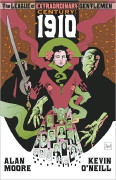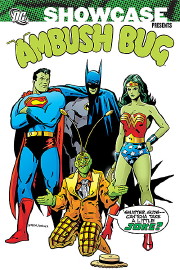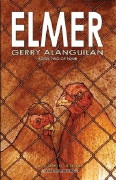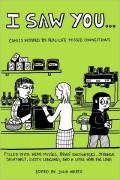Manga Friday: The Travails of Schoolgirls

Life’s tough when you’re a teenage girl – sometimes, it’s even almost as tough as those teenage girls think it is. This week, three “normal girls” with gigantic eyes try to get through their massive problems…most of which, as you might have guessed, have to do with boys.
Orange Planet
, Vol. 1
By Haruka Fukushima
Del Rey Manga, April 2009, $10.99
People in manga quite often have very odd living arrangements. Let’s take Rui, the heroine of Orange Planet, as an example: her parents died six years ago, so she moved in with her aunt then. But now – at the age of maybe fourteen – that aunt has gotten married, so Rui lives all by herself in an apartment and has an early-morning paper route…to pay her rent? for spending money? just because? And, after that paper route, she has the habit of climbing into bed (purely for warmth) with the “adorable boy next door,” Taro, who also seems to be her ex-boyfriend. And then, just a few pages into this book, a strange older man – whose name we and Rui don’t learn for a while – moves in with her because his crazy ex-girlfriend (one of many) burned his house down. And then, of course, he turns out to be the new teaching intern, Eisuke.
Luckily, Kaoru, the boy that Rui’s interested in – she’s writes her first love note ever to him on page eleven – doesn’t live next to her. But, of course, the old-friend-who’s-known-her-since-childhood, Taro, has discovered that he’s in love with her, but he can’t tell her, or the story would end suddenly. So we’ve got the usual shojo love triangle (with a girl at the vertex), with the optional advisor living (semi-secretly) with the girl – call it Shojo Plot # 7B.
Fukushima tells that story in a clean, modern shojo style – yes, everyone has gigantic eyes and no noses to speak of, but the backgrounds and page layouts aren’t cluttered and flowery like the height of ‘80s shojo frippery, and her thin, elongated bodies are exaggerated but clearly reminiscent of the real coltishness of fast-growing early teens. Orange Planet is a standard story done professionally and with a real love for the material, which goes pretty far. But I still don’t have any clue what the title means.




 There’s something about the comics form that just lends itself to stories about people in outlandish costumes trying to beat the snot out of each other, often in unfeasible ways using silly powers or items. From giant mecha to Asterix to Spider-Man, it’s just not comics unless you get something ridiculously large dropped on your head, have it shatter into pebbles, and then you shake it off and fight on. And the four books this week all are about fighting in one way or another, and, speaking of funny costumes….
There’s something about the comics form that just lends itself to stories about people in outlandish costumes trying to beat the snot out of each other, often in unfeasible ways using silly powers or items. From giant mecha to Asterix to Spider-Man, it’s just not comics unless you get something ridiculously large dropped on your head, have it shatter into pebbles, and then you shake it off and fight on. And the four books this week all are about fighting in one way or another, and, speaking of funny costumes…. 














